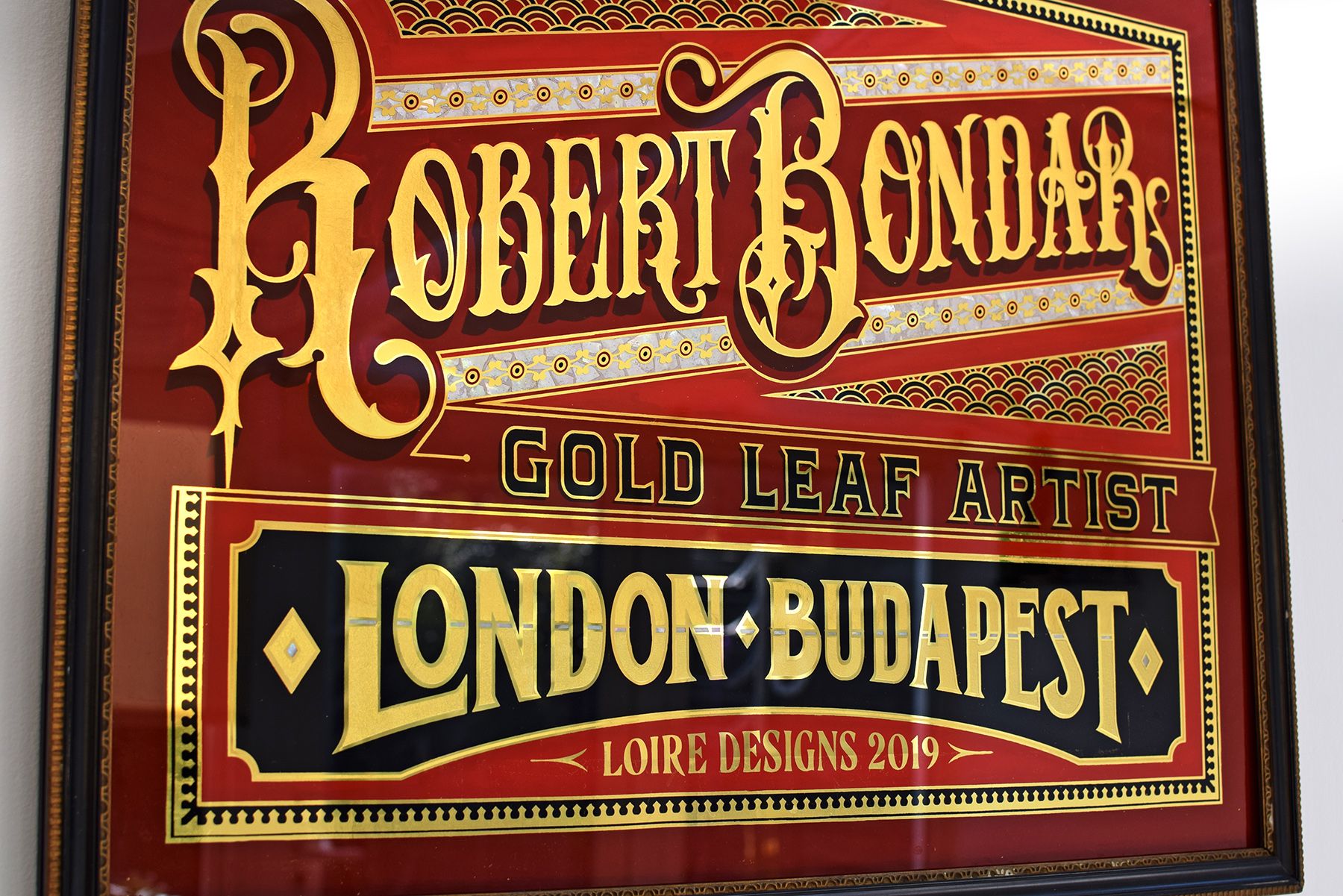We were quite sure that signwriters and gold leaf artists don’t really exist nowadays. At least in Hungary. Róbert Bondár didn’t study this unique craft in Budapest, either: he studied and is currently working in London. Interview!
Can you recall your first encounter with signwriting? Where did this mania come from?
I remember when I was little, and I travelled on the tram with my parents, I was staring out the window and reading out loud the graffitis and tags on the walls. I started drawing letters in elementary school, and then in high school, it turned out that one of my classmates was already quite into graffiti (I think you can guess who my best friend turned out to be). We drew a lot: every day was about bringing the best out of a given letter or word. Thanks to graffiti, I could acquire the basics (painting dynamic lines, the use of various paints and tools, color treatment, different effects) that proved to be very useful later on.

What was the path that led you to open your own signwriting studio in London?
I started to commute between London and Budapest after graduating from high school. I worked in London in the colder months, and I moved back to Budapest once the good weather kicked in. This went on for three years. Then in the beginning of 2012, I moved to London permanently with the aim of starting my own decor company. This was, of course, not easy. At first I was a clothing store clerk, and I worked in a restaurant on the weekends, I didn’t have a single day off for months. I did this for a little bit longer than half a year. I could save enough money to start to follow my own path. To get by, I got a job in an underground hip-hop lifestyle/record publishing store, where I was in charge of the creative department. I was also responsible for graphics, catalogue and product photos, the updating of social media platforms and the management of the online store.
In my spare time, I was able to launch my own venture, and two years later I was able to concentrate all my efforts on my own projects. I took on every graphic design possible: internal and external wall decorations, designing company signs fabricated out of different materials, logos, menus, flyers or work uniforms – I did really anything I could. In the meantime, when I had time, I also worked with gilding. Then one project brought the other.
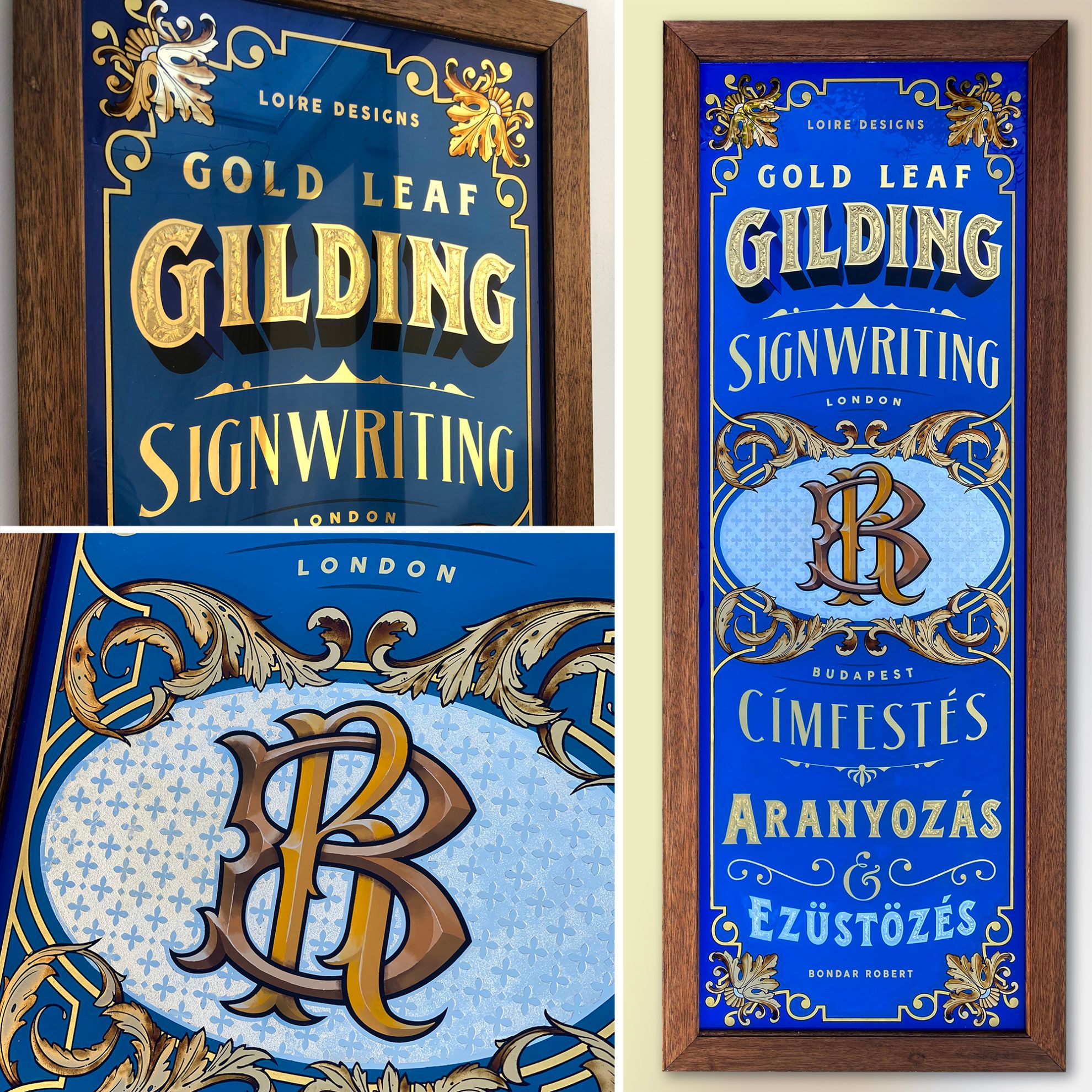
The signwriting and glass gilding trade is a traditional craft, which is coming to a new life at the moment, in the 21st century, amongst contemporary circumstances. If it can be revived at all, as the greatest problem with these crafts is that there are hardly any masters left who could pass on the necessary knowledge to the young generation. Do I see this correctly?
It’s true that this is an artisan profession that has been forgotten in Hungary unfortunately due to the country’s economical and political situation.
One can find signwriters scattered around in different parts of the country, but the gold leaf artist profession became extinct somewhere around the 1950s and 1970s, so I think its extremely important that we talk about it. I noticed that once I tell someone what my profession is, it’s like I opened a new world for them: they start to look at the streets from a different angle.
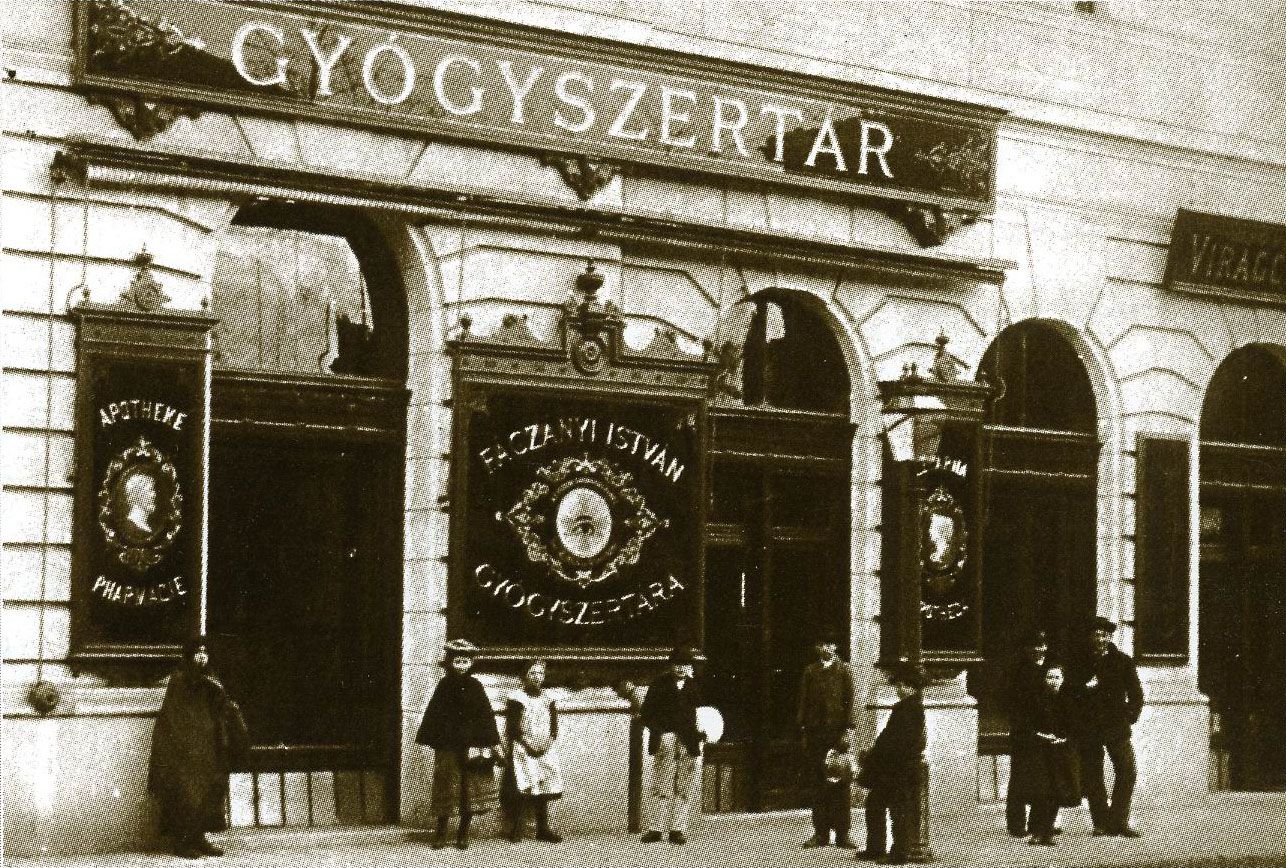
Exactly what processes does glass gilding and signwriting consist of?
Signwriting and glass gilding are, in effect, two separate professions. Signwriting and signboard writing mean hand-painted signs, these can be seen on the fronts of businesses the most, although there are less and less of these signs in Hungary, sadly.
Glass gilding comes from the French expression verre églomisé, which is a glass decoration technique: essentially we paint and gild on a glass surface, instead of a canvas. Signwriters started to apply this technique in the 19th century, combined with letters in order to create even more exciting and value certain pieces.
Think of glass gilding as a premium category service attached to the profession of signwriting, as not every signwriter is proficient in glass gilding.
We use thin gold sheets for gilding, so-called “gold leaves”, which we fasten on the surface of the glass with various techniques. Usually we use real gold, which is available from 6 carat white gold up to 24 carat fine gold, in more than 20 shades, but silver, platinum and copper can also be used. Of course this is not all, there are quite a lot of decorating techniques in the decoration of the glass signs and in creative signwriting. My favorites include the use of shell inlay decorative elements, acid etching or engraving and then gilding, and I could go on and on.
Just like it is illustrated in the 19th century photographs: exigent stores preferred glass signages. This can still be seen in Western Europe and the United States, at stores representing traditional values and with a history going back to several decades even today. The shiny golden graphics on a black background and the matte golden graphics are the ultimate classics all around the world.
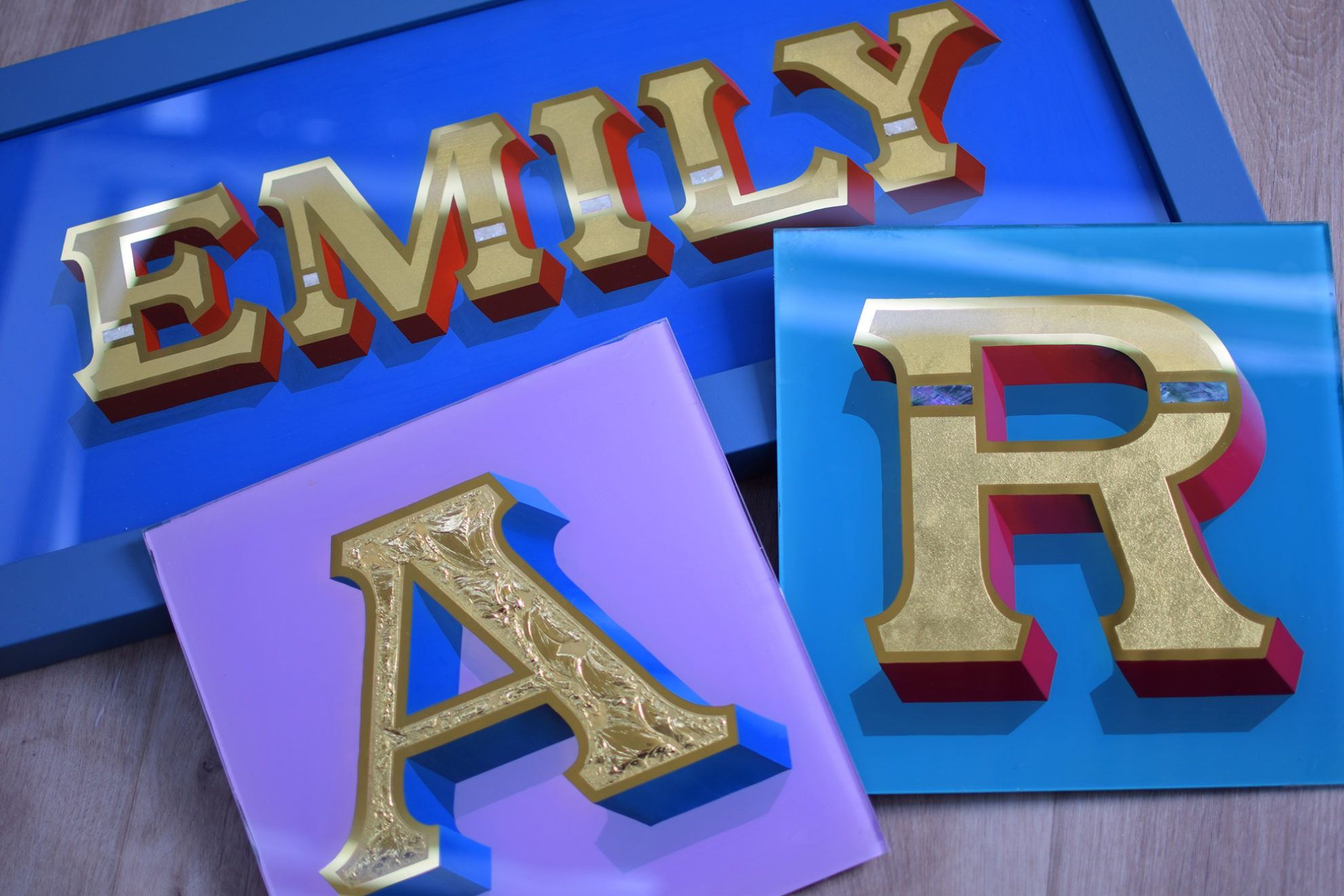
You studied the technique of glass gilding from one of the greatest masters of the trade, David Adrian Smith. How did this happen? Tell us a bit more about this.
The idea that I wanted to work with gilding conceived in my mind in 2011. It was quite difficult to find any resources at the time. Owing to natural professional jealousy, there weren’t really any platforms where I could research specific descriptions or where I could learn what to procure and from where. I hardly spoke any English at the time, not to mention the terminology! I was able to create my first gilded work sometime around the end of 2013.
In 2016, I started gilding shop window glasses for an English pub chain. In 2018, I met David A. Smith, and this was a very important milestone in my life, as his works and craftsmanship have been the greatest inspiration for me for years and he continues to inspire me even today. We met in the framework of a course in his workshop in Torquay, where I learned a lot.
What is a day of work like for you? Do you work alone usually?
This profession is mainly carried out by single craftsmen nowadays. Many times I work with my girlfriend, who is an illustrator and painter, and loves to apply the verré églomisé technique, and I can also count on friends from the industry, too. As this is a relatively small movement, everyone knows everyone all around the world: even if not in person, but we can exchange experience and ask for advice on Instagram. Of course, I have periodic partners, design agencies and interior designers for example, but I am in charge of performing the work, from design to implementation. There are periods when there is busy work from early in the morning till late in the evening, sometimes even at several locations. There are also quieter periods, when I have time to work in my workshop and experiment with my own projects.
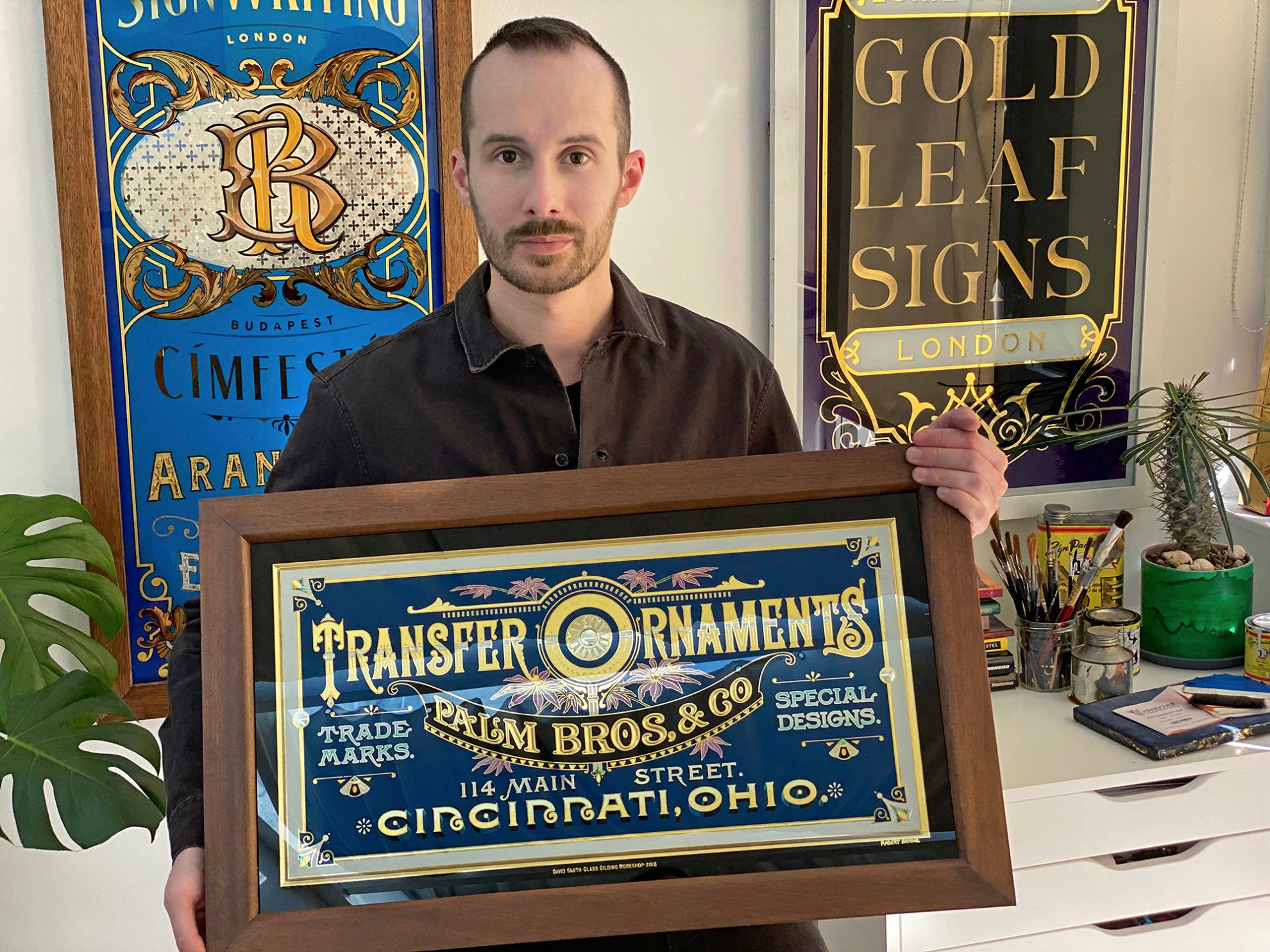
What types of jobs are you contacted with?
You can see quite many gilded shop windows and signs all over England, even on the fronts of smaller ventures. The majority of orders is made in relation to existing shop windows, and is to be carried out on the spot. House number gilding is also very popular, by this I mean private apartments, where the glass panels above the entrance door are decorated.
Essentially I meet two types of clients: there are ones who are completely familiar with the quality of the process, and know that a gilded sign may last for even a 100 years – these clients generally come from the older generations and they prioritize quality and longevity. There are also the young and trend-sensitive ventures who are after a unique look, and this artisan quality is equally important to them.

Your orders come from England mainly. At the same tome, this type of gilding and signwriting was very popular in Paris, Vienna and Budapest at the turn-of-the-century. Do you receive any orders from Hungary?
I would love to work on Hungarian projects in the future, but I haven’t had the chance so far. I think the main problem is that the Hungarian audience and the potential clients don’t know this technique at all, they have never really heard about it. My goal is to make these exigent artisan glass signs and gilded shop windows wide-spread again amongst those Hungarian businesses where the image designs, the business premises or the historical past of the given company quasi requires it.
I would like it if the old signwriting and glass gilding traditions could be revived in Hungary, too, in the future. I started goldleaf.hu a little over a year ago, with the aim of providing information in Hungarian language, as a form of knowledge sharing: here you can read a brief summary about signwriting traditions in Budapest.

Which of your works are you the proudest of?
One of my most interesting and special projects was the exhibition titled ’’Ash From Chaos’’, for which I prepared with a glass coffin with Joe Corré: he is the son of former manager of the Sex Pistols Malcolm McLaren and world-famous designer Vivienne Westwood. After Malcolm McLaren died, Joe inherited the stage costumes of the band (designed by her mother) and many other extremely valuable memorabilia. We wanted to call the attention to the problems related to global warming with the exhibition: Joe burnt his heritage as a form of protest on a boat in the middle of the Thames, and then we placed what remained in a glass coffin, and in three other wall art installations. Then we applied relevant gilded texts inspired by Sex Pistols on the top of the coffin, such as ’Extinction’, ’’C-Ash From Chaos’ and we also changed the title of an album of Sex Pistols, this is how „Anarchy in the UK” became ’’Apathy in the UK’’. The exhibition took place at one of the most famous galleries in London, in Lazinc Gallery.
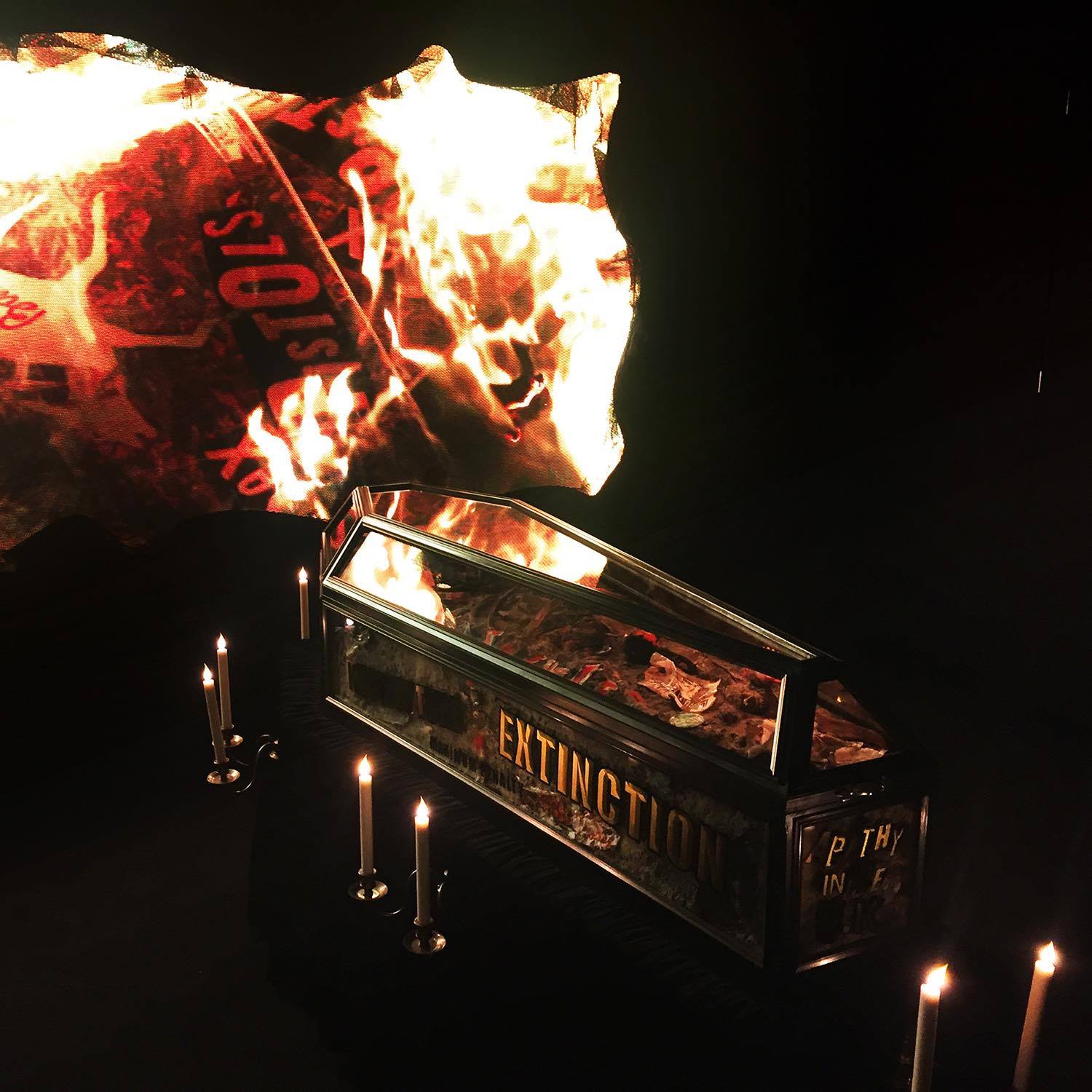

Your master, David A. Smith has worked for clients such as Victoria & Albert Museum, Burberry in London or Jameson Whiskey in Dublin. Who is on your bucket list?
I haven’t really thought about a list of the like. I can be very enthusiastic about each and every project, and I am happy that I can do what I enjoy. The most important thing for me would be perhaps if glass gilding could return to Hungary, to the right places. By right places, I mean the fronts of turn-of-the-century buildings, and the shop windows of historically significant businesses and cafés. I can be utterly frustrated when I see a building under restoration while I walk around in Budapest, and I see that they pay particular attention to restore each and every detail of the building to its original condition, by involving the required craftsmen and professionals, and then they put a sticker on the shop window. Paris Courtyard or Klotild Palace is amongst these, for example, where the black glass surface almost screams for gilding. It’s a sin to replace glass gilding/gilding with golden paint or golden stickers. These obviously cheap solutions alone can determine how we think of a venture.
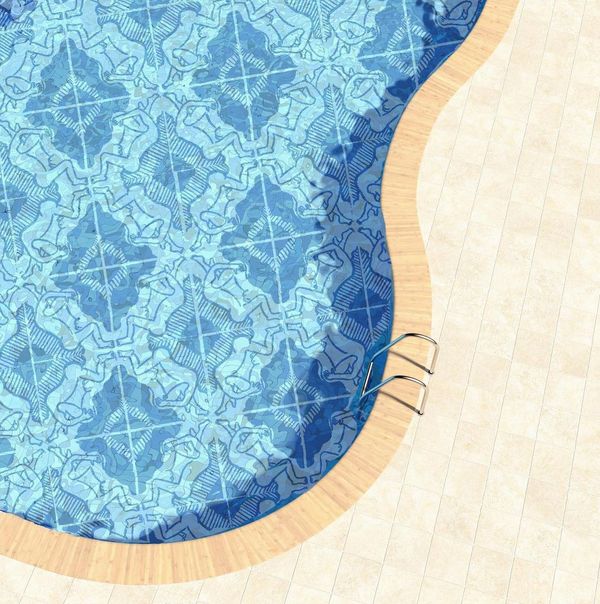
When a tile becomes erotic
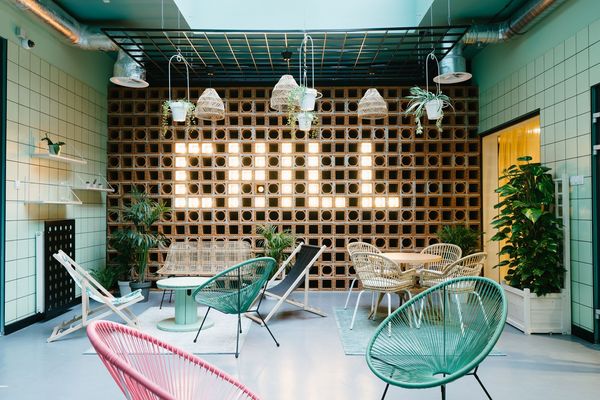
Youthful and modern student hostel in the heart of Łódź










